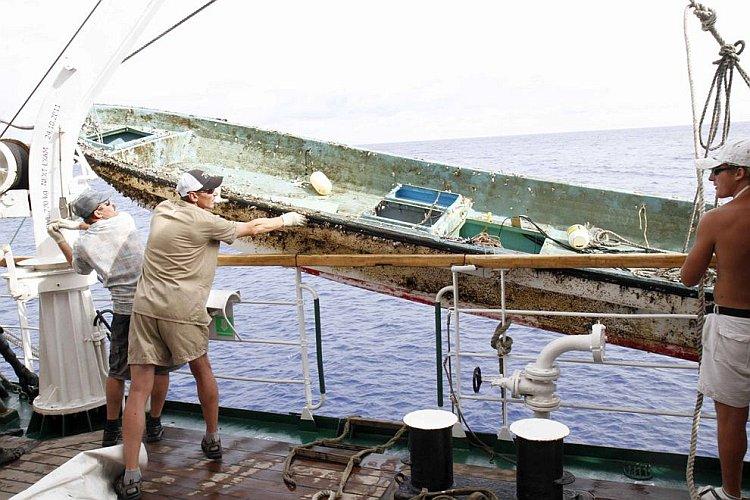VICTORIA, Canada—Some of the bigger items of the estimated 20 million tons of debris washed out to sea by the Japanese tsunami in March may have already begun arriving on the West Coast of Canada, according to a Seattle-based oceanographer.
“My calculations show that it might have started to arrive in early November,” says Curt Ebbesmeyer, who tracks the movement of flotsam using computer models.
“The wind sails it along. So you take an object like a fishing buoy that actually went from Japan to Washington state in 8.0 months. If you add March plus eight months, you get Nov. 3.”
He says the debris is likely to reach British Columbia, as well as Washington and Oregon around the same time.
The massive debris field, estimated to be about the size of California, is composed of everything from parts of houses to vehicles to boats, as well as a raft of smaller items.
“The big stuff comes in first, the little stuff will be another year or two out,” says Ebbesmeyer, who began studying the movement of flotsam in 1990 after 80,000 sneakers were swept into the ocean from a cargo ship.
He has since monitored the movement of a wide variety of items that end up in the ocean, and specializes in forecasting the movement of sewage and oil spills, working on projects such as the Exxon oil spill in Alaska.
“I look at anything that floats on the ocean, which is virtually unexplored on our planet,” he says. “There’s no oceanographer other than myself looking at what actually floats on the ocean.”
Using a different method, oceanographer Nikolai Maximenko and scientific computer programmer Jan Hefner, researchers at the University of Hawaii’s International Pacific Research Centre, have been monitoring the trajectory of the Japanese debris through computer models of ocean currents and ship reports.
They estimate the bulk of the floating mass will reach the West Coast of North America around 2013.
“Different pieces move somewhat differently, so it’s difficult to tell when the lightest objects will start to show up. It may be sooner, actually, but the main mass, the heaviest part, will probably come in 2013,” says Maximenko.







